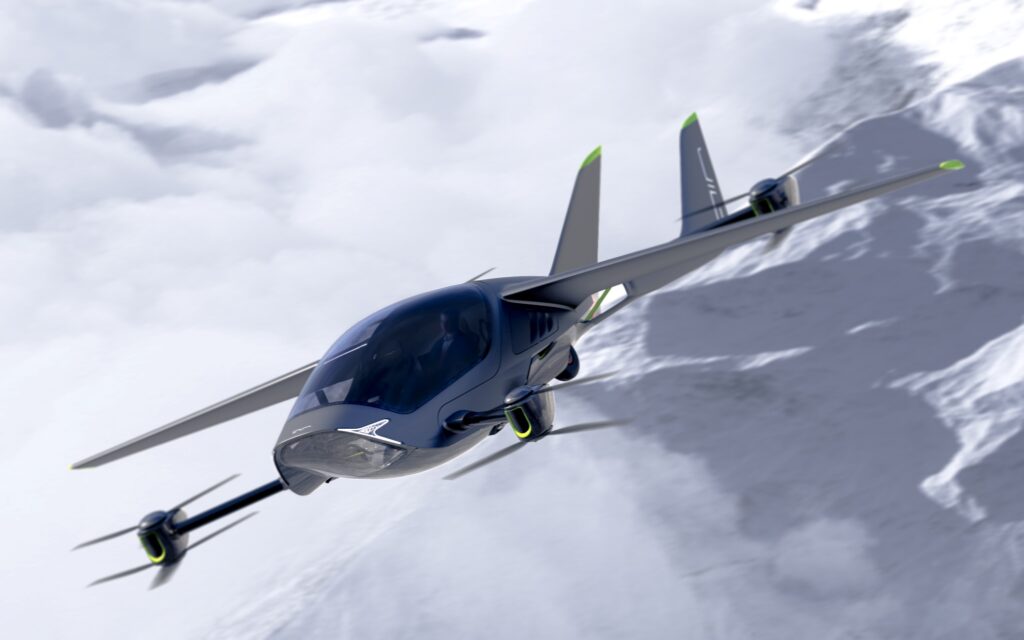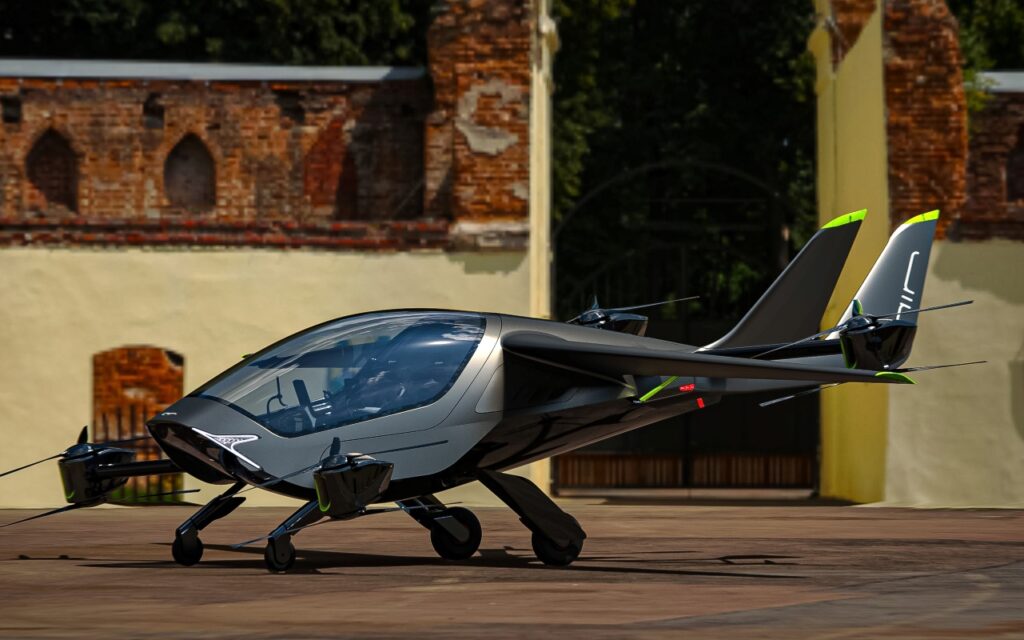AIR, the Israeli company behind a recently unveiled AIR ONE personal eVTOL (electric vertical take-off and landing) for the consumer market, is attempting to redefine the notion of personal mobility through an exploration of the area between the automotive and aerospace sectors.
In an interview with NoCamels, AIR CEO and Co-Founder Rani Plaut, a serial investor “with the scars to prove it,” said he joined forces with the company’s CTO Chen Rosen, who has worked in aviation all his professional life, including with UAVs.
“In 2017 we embarked on a journey,” Plaut reminisces. “I invested in the company in 2019, after I realized that we have something unique.”

Plaut acknowledges that AIR is looking to implement a paradigm shift – to change something fundamental in the world. He is, however, humble enough to understand that to get to the ultimate goal of normalizing flying vehicles as a mobility alternative to increasingly congested roads – and make it acceptable to as broad a base of people as possible – significant change cannot be performed all at once and must be tackled incrementally. At the moment, individuals wishing to fly the craft will require the most basic pilot’s license – which can be attained with as little as 15 flying hours. That is the point – more of a democratization of who is able to take to the skies to fly their own vehicles and not simply limited to those who have racked up hundreds of flying hours.
AIR’s inaugural vehicle is an all-electric two-seater eVTOL that offers a range of 110 miles on a single charge at speeds up to 155 miles per hour, with a flight time of one hour. AIR ONE prioritizes everyday practicality for consumers with collapsible wings for easy parking and its ability to take off from or land on any flat surface.
Although a price list will not officially be released until 2022, the units will be customizable, very similar to how those purchasing a car can select from different trim levels, etc. AIR is still ironing out the full range of upgrades, some of which will be software-based, as well as the possibility of providing more data on the display screens and, as in the case of electric vehicles, an extended range, and top speed.
With a background in physics and mathematics and a curiosity about how things work, Plaut explains that AIR has taken as comprehensive an approach as possible to the concept of a flying vehicle, concentrating on a convergence of topics.
SEE ALSO: Israel’s Eviation To Deliver 12 All-Electric Cargo Planes To DHL
Sign up for our free weekly newsletter
Subscribe“We have focused on three main aspects; an aerodynamic arrangement that supplies simplicity – i.e. the absence of moving parts with the exception of the motor; the vehicle is very simple and has a long-range and we also emphasized that it has to have high efficiency and maneuverability,” he said.
At the heart of AIR ONE is the company’s ‘fly by intent’ software, which manages complex functions and navigation, so that usage isn’t restricted to highly skilled pilots and trained professionals. Additional safety features include an AI-enabled monitoring system that does frequent inspections of the vehicle and eliminates checklists for riders to ensure paramount safety, even for riders with minimal training.
Fly by intent differs from fly by wire in that the latter is an electronic interface that controls an aircraft. “Fly by intent allows for simpler flight control systems. In a way, it behaves like an organism,” says Plaut. “If you push the stick left, it’s not just that the aircraft tilts left, it sort of senses the direction of travel you desire – it’s like a biologically-inspired element.” The other aspect of the system is that there is a short feedback loop and that after only a few minutes of flying even a relatively inexperienced pilot can feel as though they are in complete control.
“Our view is not to put special technology into people’s hands, rather we assess that the biggest hurdle to overcome is making people comfortable with flying as a concept of personal mobility, rather than a mass transit commercial flight. If we can lower the variables, it will not seem so unusual that individuals will be able to control something that flies in the sky… it’s precisely why we called the company AIR,” he says.
This, Plaut says, is a result of how we have been conditioned over the last century or so, to view the car as more intimately integrated into our everyday way of life. “Automotive began to develop in the early 1880s and aerospace in the early 1900s, so the idea of machines being used to move people around on both the ground and in the air at around the same time. With aerospace, you have to take into consideration height, weight, aerodynamics – a number of different things. Automotive was more low-cost and relatively more straightforward – allowing for the creation of production lines. Even today, the amount of tech that goes into an Airbus 380 carrying 600 passengers or an F-35 fighter jet, takes it beyond most people’s comprehension. Although there are obviously highly advanced technological cars, more than 70 million new vehicles are bought each year, which highlights just how well it is integrated into most people’s daily lives. We want to do the same for aerospace, a migration of technology and materials.”
Given that the company is designing aircraft, it has worked very closely with the Federal Aviation Authority (FAA) in the United States and Israel’s Civil Aviation Authority (CAA). AIR is in constant contact with Israeli authorities, although it is still hoping for certification in the country. The company is building prototypes to fly in early 2022 and the company expects the finished products to be fully operational within four years. Eventually, it expects to build both two- and four-seat versions of the personal eVTOL.
So, are there any drawbacks? “Well, we are looking to hire,” he remarks wryly. “There are only a few people who have the requisite experience in JAVA, Python, etc. Honestly, if you are the right person for us, you’ll know. There are very specified tools and capabilities and if you are one of those few people who know about designing and constructing aircraft we’d welcome you to join us on our journey.”
Related posts

Editors’ & Readers’ Choice: 10 Favorite NoCamels Articles

Forward Facing: What Does The Future Hold For Israeli High-Tech?

Impact Innovation: Israeli Startups That Could Shape Our Future




Facebook comments